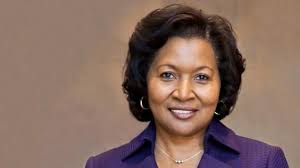This post is based on the following chapter in the Encyclopedia of Heroism Studies:
- Allison, S. T. (2023). Home and the Hero’s Journey. In S. T. Allison, J. K. Beggan, and G. R. Goethals (Eds.), Encyclopedia of Heroism Studies. New York: Springer.
By Scott T. Allison
Joseph Campbell’s (1949) concept of the mythic hero’s journey starts and ends at home. In the beginning, home represents the safe, familiar, and ordinary world where the hero lives in apparent ease and comfort. Unaware of their need for growth, heroes embark on a challenging journey that pushes them to realize their full potential. This journey transforms the hero, who then returns home with a new perspective and offers a boon or gift that brings positive transformative change to their community.
There’s No Place Like Home
The hero’s journey consists of three key stages: Departure, Initiation, and Return. One of the most iconic films of the 20th century, The Wizard of Oz, tells the story of a young girl, Dorothy Gale, who is uprooted from her home and faces numerous challenges in her quest  to return. In his analysis of the film, David Smith (2014) delves into the deeper meaning of its famous catchphrase, “There is no place like home.” While commonly understood to mean that home is the best place to be, the phrase can be interpreted more literally to suggest that “home” isn’t a physical location at all. If home is “no place,” then what is it?
to return. In his analysis of the film, David Smith (2014) delves into the deeper meaning of its famous catchphrase, “There is no place like home.” While commonly understood to mean that home is the best place to be, the phrase can be interpreted more literally to suggest that “home” isn’t a physical location at all. If home is “no place,” then what is it?
Dorothy Gale comes to understand what home truly means, but only after embarking on an extraordinary adventure in a strange land. Or did she? As revealed at the end of the film, Dorothy never physically traveled anywhere. During a severe storm, she hit her head, lost consciousness, and hallucinated the entire journey through the land of Oz. Dorothy’s “journey home” was actually an interior journey, not a physical one.
Like many aspects of the hero’s journey, “home” can have both a literal meaning and various symbolic or metaphorical interpretations. Home can indeed be a physical place, and many hero stories involve traveling to unfamiliar and transformative locations. However, alongside this physical journey, there is always a corresponding psychological journey for the hero. Before leaving the land of Oz to return to Kansas, Dorothy is asked by the Scarecrow what she has learned. She responds, “If I ever go looking for my heart’s desire again, I won’t look any further than my own backyard. Because if it isn’t there, I never really lost it to begin with.”
Dorothy’s deepest wish was always to return home, and she discovers that home was within her all along. When she realizes that her heart’s desire is in her own backyard, Dorothy acknowledges that there is truly no “place” like home. She comes to understand that her home in Kansas was never the ultimate destination of her journey.
She learns that home has two key aspects: it is the deepest desire of your heart, and it is a quality that you always carry within yourself. In essence, home represents the ideal of being fully and completely “in place.” To be “in place” means becoming entirely who you are meant to be — your best self, your transformed self, your most heroic self.
What often prevents us from feeling completely “in place” is usually a major personal shortcoming that hinders our true potential or an unresolved past trauma that needs to be addressed and healed. Overcoming this inner issue requires embarking on a profound internal journey, much like the one Dorothy experienced. This is the ultimate goal of the hero’s journey, a journey that paradoxically leads us away from home so that we can truly find it.
Examples of Heroes Finding Home
We can also observe that most heroes in film and literature share Dorothy’s goal: to achieve their deepest desire. However, they may not initially realize that reaching this external goal requires an inward journey first. For instance, Luke Skywalker must find the Force within himself before he can defeat the Galactic Empire, just as Dorothy needs to embark on her internal journey before physically returning home. Similarly, in the animated musical Frozen, Elsa embarks on an external journey that ultimately leads her to understand the power of love and self-acceptance. Through this journey, she discovers the strength of her bond with her sister, Anna, and the true nature of her powers.
The movie Erin Brockovich depicts a woman’s external journey of collecting evidence against a powerful corporation. Through her persistence and dedication to justice, Erin uncovers her inner strength and a sense of purpose in advocating for the community’s rights. These films highlight strong and resilient heroes who confront challenges in the external world while discovering important truths about their deepest desires along the way.
Most of us rarely consider our life journeys as leading us back home, yet home is the ultimate destination for nearly all forms of life. A plant emerges from the ground and eventually returns to it. Every animal experiences complete union with its mother before being born or hatched, and once that connection is broken, we tend to long for it, need it, and seek to reestablish it before we can fully engage in our outward endeavors.
This desire for home could be considered our biological and psychological imperative, but perhaps the best way to describe it is as our heroic imperative. We all leave home and eventually return, sometimes in a literal sense but always internally—just like Dorothy Gale, Harry Potter, Snow White, Odysseus, and countless others, both in fiction and in real life. Returning home is always the goal in hero stories, and it is a common theme throughout the natural world as well. Think of bird migrations, salmon swimming upstream, or lost dogs traveling long distances to find home. Returning home is the ultimate goal of all life.
We Already Have What We Seek
Perhaps the most remarkable lesson about home that we can learn from the hero’s journey is that the qualities we most need and desire from home are always within us, even if we aren’t aware of them. Recall Dorothy’s realization that her heart’s desire was always in her backyard. Glinda the Good Witch tells Dorothy, “You’ve always had the power to go back to Kansas.” When the Scarecrow asks why Glinda didn’t tell Dorothy this earlier, Glinda replies, “Because she wouldn’t have believed me. She had to learn it for herself.” This is the idea of heroic autonomy (Allison 2023).
Dorothy always had the power to return home, but she needed to realize it through her own experiences and self-discovery. This revelation emphasizes the importance of self-awareness and recognizing the potential within oneself. It underscores the transformative nature of her journey, where she not only found her way back home but also learned that she didn’t need to search outwardly to find it. The key to fulfilling her deepest desire was within her all along.
We are faced with the irony that heroes must embark on a challenging journey to obtain something they already possess. For countless millennia, spiritual teachers, from Rumi (2004) to Eckhart Tolle (2004), have been telling us that the secret to becoming our best, most heroic selves lies within us. Stories and fairy tales like The Ugly Duckling, Cinderella, and The Little Mermaid all convey the message that each of us holds the key to our own salvation. Glinda’s wisdom as a mentor was understanding that heroes must uncover this truth for themselves.
The Return stage symbolizes the hero’s reintegration into society after their transformative journey. In this phase, the hero brings back the knowledge, wisdom, or treasure they gained to benefit their community or the world. Here, “home” becomes a symbolic concept, representing the point of arrival where the hero returns to their ordinary world or community, which may have changed during their absence. The hero’s ultimate goal is not just to return to the physical place they left but to reintegrate and create positive change in their home or society.
Campbell emphasized that the hero’s return can be challenging, as they may face resistance or disbelief from those who did not experience the same transformative journey. The hero must reconcile their newfound knowledge and growth with the familiar environment and relationships they left behind. This phase often involves the hero sharing their wisdom, inspiring others, and using their experiences to bring positive change to their community. In Campbell’s hero’s journey, “home” represents more than just a physical location. It signifies the hero’s reconnection with their roots, community, and sense of belonging. It underscores the hero’s role as a catalyst for change and their responsibility to contribute to the well-being and growth of their society.
A common theme in all human lives and storytelling is the temporal pattern of order-disorder-reorder. Initially, home is a safe, familiar, and orderly place, but eventually, it no longer meets the hero’s needs. An event occurs that thrusts the hero into a chaotic, painful, and disordered experience, compelling them to undergo significant inner change and growth. The hero then arrives at a new “home,” representing a reordered reality that may resemble the old one but is fundamentally different in crucial ways. This order-disorder-reorder pattern has been expressed in various forms: construction-deconstruction-reconstruction, fall-winter-spring, Eden-Fall-Paradise, life-trauma-PTG, thesis-antithesis-synthesis, solution-dissolution-resolution, life-crucifixion-resurrection, caterpillar-cocoon-butterfly, and many others. It is the universal pattern of nature and the pervasive pattern of healthy human development (Rohr 2020).
Heroes often resist what is good for them, which is why many are forced to leave home against their will. People can be highly resistant to life-changing transformations for various reasons, with fear being the primary one. Change often brings uncertainty, and the unknown can be intimidating. People may feel comfortable with the familiar and resist change because they fear the potential negative outcomes or disruptions it might bring. The fear of the unknown can lead people to prefer staying in familiar territory rather than exploring unfamiliar possibilities. There is also a fear of failure—change involves taking risks and stepping into the unknown, which can trigger anxiety about failure. We may resist change because we worry about making mistakes, facing negative consequences, or not being able to handle the new situation. This fear of failure can cause us to avoid change and remain in our current circumstances rather than confront potential challenges or setbacks.
Conclusion
In the hero’s journey, “returning home” carries deep psychological significance as it symbolizes the completion of the transformative process and the incorporation of the hero’s newfound wisdom and growth into their daily life. The hero has come full circle, evolving from a naïve individual, lacking qualities necessary for becoming their true self, into a transformed hero who is self-confident, resourceful, courageous, resilient, and wise. The hero’s journey involves not only external adventures but also an inner journey of self-discovery and personal growth.
In the hero’s journey, “returning home” ultimately symbolizes more than just a physical return; it signifies an emotional and psychological homecoming. It reflects a deep transformation, reconciliation with the past, and the hero’s readiness to embrace their evolved self and life purpose. For the hero, and for all of us who dare to undertake the challenging hero’s journey, there truly is no place like home.
References
Allison, S. T. (2023). Heroic autonomy. In S. T. Allison, J. K. Beggan, & G. R. Goethals (Eds.), Encyclopedia of Heroism Studies. New York: Springer.
Allison, S. T., Goethals, G. R., Marrinan, A. R., Parker, O. M., Spyrou, S. P., Stein, M. (2019). The metamorphosis of the hero: Principles, processes, and purpose. Frontiers in Psychology, 10, 606.
Campbell, J. (1949). The hero with a thousand faces. New York: New World Library.
Jung, C. G. (1968). Man and his symbols. Des Moines: Turtleback.
Rohr, R. (2020). The wisdom pattern. Cincinnati: Franciscan Media.
Rumi (2004). The essential Rumi. New York: Harper.
Smith, D. L. (2014). “There’s no place like home”: An American koan. Journal of Religion & Popular Culture, 26 (3), 287-292.
Tolle, E. (2004). The power of now. New York: New World Library.












